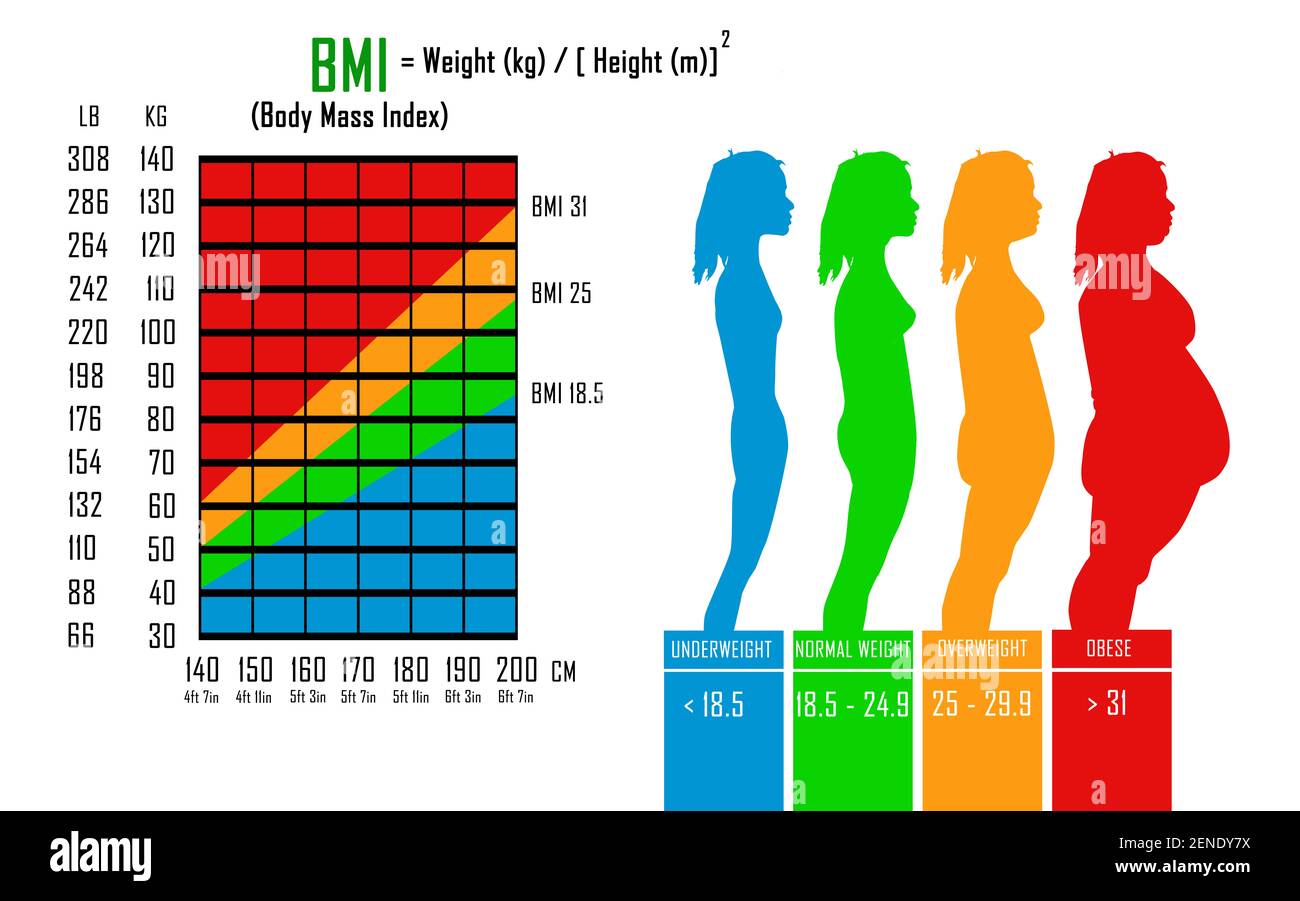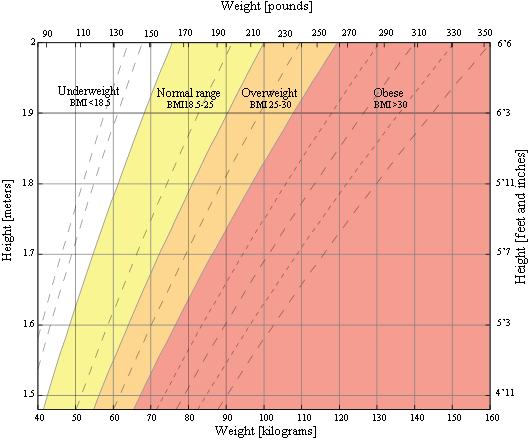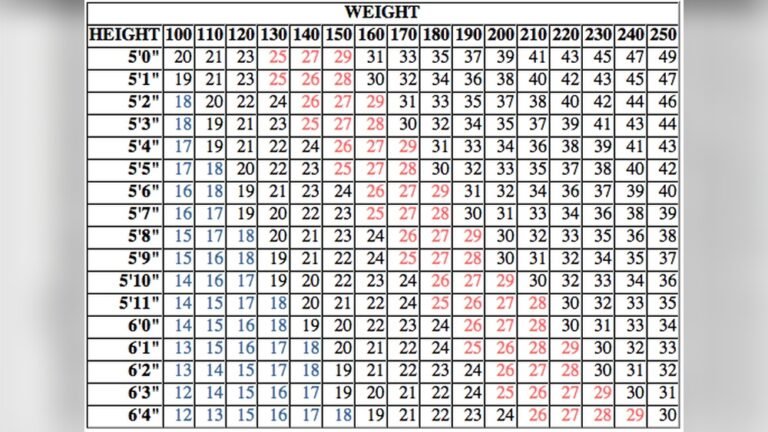Are you curious about where you stand when it comes to your body weight and overall health? Using a BMI Chart Women Calculator can give you a clear, simple way to understand your body mass index and what it means for your well-being.
This tool isn’t just about numbers—it’s about helping you take control of your health by showing whether your weight falls within a healthy range. Whether you want to maintain your current weight, lose a few pounds, or just get informed, knowing your BMI is a great first step.
Keep reading to discover how this calculator works, why it matters specifically for women, and how you can use it to make smarter health choices tailored just for you.
Bmi Basics For Women
Understanding BMI is important for women who want to track their health. Body Mass Index, or BMI, helps estimate if your weight is healthy for your height. It uses a simple formula based on your weight and height. This number can guide women on maintaining a balanced weight.
BMI is easy to calculate and widely used by doctors and health experts. It helps identify if a woman is underweight, normal weight, overweight, or obese. These categories can suggest potential health risks related to body weight.
What Bmi Indicates
BMI shows a rough estimate of body fat. A low BMI may mean you are underweight and might need to gain weight. A high BMI can signal overweight or obesity, raising risks for diseases like diabetes or heart problems.
Normal BMI for most adult women ranges from 18.5 to 24.9. Values below or above this range can affect health. It gives a quick way to check if your weight fits your height.
Limitations Of Bmi
BMI does not measure body fat directly. It cannot distinguish between fat and muscle. Athletes or muscular women may have a high BMI but low body fat.
Age and body shape also affect BMI accuracy. Older women may have more fat but the same BMI as younger women. BMI should not be the only health measure used.
Always consider other factors like diet, activity, and overall health. Consult a healthcare provider for a full health assessment.
:max_bytes(150000):strip_icc()/VWH_illustration_BAF8FF3-8c364807534d4b52adc4a9d649036dee.png)
Credit: www.verywellhealth.com
Using The Bmi Chart
Using the BMI chart helps women understand their body weight status clearly. It provides a simple way to check if weight is within a healthy range. The chart uses height and weight to calculate the Body Mass Index (BMI). This number shows if a person is underweight, normal weight, overweight, or obese.
Reading the chart correctly is important to get useful information. The chart is easy to use and gives quick results. Knowing your BMI can guide better health choices and lifestyle changes.
Reading The Chart
The BMI chart lists height on one side and weight on the other. Find your height in feet and inches first. Then look across to your weight in pounds or kilograms. The number where height and weight meet is your BMI.
Different colors on the chart show different weight categories. Green means healthy weight. Yellow means overweight. Red means obesity. This visual guide helps women see their health status fast.
Age-specific Ranges
Age affects what BMI range is healthy for women. Younger women usually have a wider healthy BMI range. Their bodies are more flexible and can carry different weights.
- Younger women: BMI between 18.5 and 24.9 is normal.
- Older adults: BMI between 23 and 29 may be healthier due to changes in muscle and fat.
Age-specific ranges help avoid false judgments about health. Muscle loss and other changes with age affect BMI meaning. Doctors use these ranges to give better health advice.
Calculating Bmi
Calculating Body Mass Index (BMI) is a simple way to assess body weight relative to height. It helps identify if a woman is underweight, normal weight, overweight, or obese. BMI is a useful tool for tracking health trends and making lifestyle decisions. The calculation uses two common measurement systems: metric and US customary. Each system has its own formula. Understanding both makes BMI calculation easy and accurate.
Metric Formula
The metric formula uses kilograms and meters. It divides weight in kilograms by height in meters squared. The formula looks like this:
This formula works well worldwide, especially in countries using the metric system. It provides a clear number to compare with BMI charts for women.
Us Customary Formula
The US customary formula uses pounds and inches. It multiplies weight in pounds by 703. Then, it divides by height in inches squared. The formula is:
BMI = (weight (lbs) × 703) ÷ height (in)²
This formula fits the measurement system used in the United States. It gives a BMI result compatible with standard BMI charts.
Sample Calculation
For example, a woman weighs 150 pounds and is 65 inches tall. Using the US customary formula:
BMI = (150 × 703) ÷ (65 × 65) = 105450 ÷ 4225 = 24.96
This BMI falls within the normal weight range. For metric units, if she weighs 68 kg and is 1.65 meters tall:
BMI = 68 ÷ (1.65 × 1.65) = 68 ÷ 2.72 = 25
The result is similar, showing the formulas provide consistent BMI values.

Credit: www.alamy.com
Bmi Categories For Women
Understanding BMI categories helps women assess their health and weight status. The BMI chart for women divides results into clear groups. Each group shows different health risks linked to body weight. Knowing your category guides you in managing your wellness.
Underweight
Underweight means a BMI below 18.5. This category may signal nutritional problems. It can affect energy levels and immunity. Women in this group might need to gain weight. A healthcare provider can help plan a healthy approach.
Normal Weight
A BMI between 18.5 and 24.9 is normal weight. This range is linked to lower health risks. It often indicates balanced body fat and muscle. Maintaining this range supports overall wellness. Healthy eating and regular exercise help keep it steady.
Overweight
Overweight is a BMI from 25 to 29.9. This category raises risks for heart disease and diabetes. It shows extra body fat that may affect health. Women here should monitor their weight and lifestyle. Small changes can improve health and prevent problems.
Obese
Obesity means a BMI of 30 or higher. This group faces higher risks for many diseases. It often requires medical support to manage weight. Lifestyle changes alone might not be enough. Consulting a healthcare provider is important for safety.
Age And Bmi Considerations
Body Mass Index (BMI) is a simple tool to estimate body fat based on height and weight. Age affects how BMI values should be read and understood, especially for women. Different age groups may have different healthy BMI ranges. This section explains how age influences BMI results and what women should consider.
Younger Women
For younger women, BMI helps track healthy growth and body changes. Teens and women in their twenties often have more muscle mass. Muscle weighs more than fat, so their BMI might be higher without indicating health issues. BMI does not measure muscle and fat separately. It is important to use BMI with other health checks for younger women.
Older Adults
In older women, BMI needs a different approach. Aging causes loss of muscle and bone density. Fat may increase even if weight stays the same. A normal BMI might hide unhealthy fat levels. Older adults should focus on body composition and strength too. Doctors may suggest a slightly higher BMI range for seniors to reflect these changes.
Health Factors Beyond Bmi
BMI offers a quick way to estimate a healthy weight range. It uses height and weight to calculate a simple number. Yet, BMI alone does not tell the full story about health. Many factors can affect body weight and health beyond this number. Understanding these factors helps women make better health choices.
Muscle Mass And Body Composition
Muscle weighs more than fat but takes up less space. Women with high muscle mass may have a higher BMI. This does not always mean they are overweight or unhealthy. Body composition is a better health indicator. It shows the proportion of muscle, fat, and bone in the body. Athletes often have a BMI in the overweight range due to muscle. Measuring body fat percentage can give a clearer health picture.
Consulting Healthcare Providers
Health is complex and personal. BMI does not consider age, bone density, or fat distribution. A healthcare provider can assess these factors. They can offer advice tailored to individual needs. Regular check-ups help track changes in health over time. Discussing diet, exercise, and medical history improves health decisions. Providers use BMI as one tool among many to evaluate health risks and goals.
Bmi Calculator Tools
BMI Calculator Tools help women quickly find their Body Mass Index. These tools use height and weight to give an estimate of body fat. Understanding BMI can guide health and fitness decisions. Many options are available to suit different needs and preferences.
Online Options
Online BMI calculators are easy to use on any device with internet. Enter your height and weight, then get instant results. Many websites offer charts to compare your BMI with standard ranges. These tools are free and do not require downloads.
Some sites also provide tips based on your BMI category. You can track changes over time by saving your results. Online calculators are great for quick checks at home or work.
Mobile Apps
Mobile apps bring BMI calculation to your smartphone or tablet. They often include extra features like goal setting and progress tracking. Apps can remind you to measure regularly for consistent updates.
Many apps sync with fitness devices to combine BMI with other health data. This makes it easier to see the full picture of your wellness. Mobile apps work well for those who want BMI info on the go.
Bmi And Weight Loss Medications
Body Mass Index (BMI) plays a key role in deciding the use of weight loss medications. It helps doctors determine who might benefit from these treatments. Medicines like Ozempic require specific BMI levels before being prescribed. Understanding these rules is important for safe and effective weight loss.
Bmi Requirements For Ozempic
Ozempic is a popular medicine for weight loss and diabetes. To qualify for Ozempic, women usually need a BMI of 30 or higher. Those with a BMI of 27 or higher may qualify if they have weight-related health issues. Conditions such as high blood pressure or type 2 diabetes often meet this requirement.
Medical Evaluation
A medical checkup is needed before starting weight loss medications. Doctors review your BMI and overall health. They check for any medical problems that might affect treatment. This evaluation ensures the medicine is safe and suitable. Your doctor also discusses possible side effects and how to use the medicine properly.
Lifestyle Changes
Medicine alone does not guarantee weight loss success. Healthy eating and regular exercise remain essential. Doctors recommend combining lifestyle changes with medication use. Small, steady changes are easier to maintain over time. This approach improves overall health and supports lasting weight loss.

Credit: www.calculator.net
Conclusion
Using a BMI chart women calculator helps track your weight health easily. It offers a quick way to understand if your weight is in a healthy range. Remember, BMI is just one tool and does not show the full picture.
Factors like muscle, age, and body type also matter. Always talk with a healthcare provider for advice tailored to you. Keeping an eye on your BMI can support healthier lifestyle choices. Stay aware, stay healthy.



